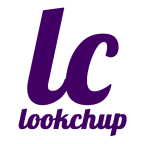Writing an eBook for the first time is a major creative undertaking that many new authors approach with enthusiasm, but also with misconceptions. It’s easy to underestimate just how much planning, effort, and revision it takes to produce something that’s not only well-written but also easy to read, informative, and worth your reader’s time. While there’s no single formula for writing a great eBook, there are common missteps that keep first-timers from reaching their full potential.
These aren’t just minor issues—they often lead to unfinished drafts, underwhelming launches, or disappointing reviews. This guide focuses on the biggest problems new authors face, along with straightforward ways to prevent them from holding your project back.
Starting Without a Clear Plan or Structure
Many first-time authors make the mistake of jumping into their writing without any real direction. Inspiration might hit hard, and it’s tempting to start typing out chapters the moment you feel motivated. But writing a book without an outline is like building a house without a blueprint—there’s a good chance things will collapse or get out of order.
Without a plan, authors often repeat ideas, wander off-topic, or lose momentum when they get stuck. Readers notice when a book lacks a consistent flow, and confusion often follows. A solid outline does more than keep you organized—it helps clarify your message, guide your chapters, and prevent you from wasting time on content that doesn’t belong.
A good starting point is to write down the main idea or goal of your book, followed by a list of key points you want to cover. From there, group related points into chapters and arrange them in a logical order. Think of this as building a smooth road from the first page to the last, giving your readers a clear and comfortable ride.
Choosing a Topic Without Researching the Audience
Your book might be filled with knowledge, but that won’t matter much if no one is interested in reading about your topic. One of the most common mistakes among new authors is selecting a subject based purely on personal interest, without checking if there’s an actual audience for it.
Writing a book is a major commitment. Before investing your time and effort, it makes sense to see what people are already asking, searching for, or struggling with. Look at online forums, keyword tools, reader reviews of similar books, and discussions on social media. This process can help you identify what people want to learn, what gaps exist in current content, and how you can position your book in a way that speaks directly to those needs.
This isn’t about chasing trends—it’s about making sure there’s a space for your book in the market. Once you know your audience, you can write with their interests, questions, and language in mind. That connection helps create a book that feels like it was written for someone specific, not just thrown into the world and hoping to stick.
Rushing the Writing and Skipping the Editing
Writing a book takes time, but many new authors set unrealistic deadlines and treat the process like a race. They try to crank out content as fast as possible, often while juggling other responsibilities, and the quality suffers. Worse still, some publish their work immediately after finishing the last sentence, skipping editing altogether.
Editing is not just about fixing grammar. It’s about refining the structure, improving flow, catching inconsistencies, and ensuring that your message is clear from start to finish. Skipping this step almost always results in a weaker final product.
Instead of rushing, aim to write consistently over time. Even writing just a few hundred words a day can lead to a strong draft in a matter of weeks. Once the draft is complete, take a break before you begin editing so you can look at the work with fresh eyes. Read it out loud, rearrange parts that feel out of place, and don’t be afraid to cut sections that don’t add value. If possible, find someone you trust to review your work—or hire a professional editor who can help polish your writing to a higher standard.
Neglecting Formatting and Visual Presentation
Readers often judge a book by how easy it is to read—not just in terms of content, but also how the text appears on the screen. Unfortunately, many new authors overlook formatting until the very end, and it shows. Walls of text, inconsistent spacing, unreadable fonts, and poor alignment can all make an eBook difficult to get through, no matter how good the content may be.
Good formatting is about more than looks. It improves readability and keeps your audience engaged. Use consistent headings, subheadings, paragraph breaks, and font styles throughout the book. Avoid cramming too much into each page, and make sure everything displays correctly on different devices. Tools like Scrivener, Reedsy, or even Word templates can help with this, but they still require care and review.
Presentation also includes your cover and title, both of which play a huge role in attracting readers. A generic or confusing title can cause potential readers to scroll past without a second thought. Similarly, a poorly designed cover can make your book look unprofessional, even if the inside is well-written. Invest time in getting these elements right. A strong title should be clear and hint at the benefit or focus of the book. The cover should match the tone and genre, and it should look just as good as anything on the bestseller list.
Writing With the Wrong Tone or Audience in Mind
Another trap first-time writers fall into is misunderstanding who they’re writing for. Some adopt an overly formal style that feels stiff and academic, while others go for an overly relaxed tone that lacks substance or credibility. Neither extreme works unless it matches what the reader expects—and that comes from knowing your audience well.
Your tone should reflect your subject and purpose. If you’re writing a guide to managing personal finances, your voice should be clear, direct, and confident. If you’re telling a personal story about your travels, your tone can be more relaxed, but still needs structure and thoughtful storytelling. Avoid writing for yourself—write for the person you imagine picking up your book. That shift in mindset often leads to more engaging, helpful, and well-focused content.
Publishing Without a Marketing Plan
Publishing an eBook doesn’t mean people will automatically find it. One of the most disheartening things for a new author is putting out a finished book and seeing almost no response—not because the content is weak, but because no one knew it was released. Without a plan to get the word out, the book ends up buried under thousands of others.
Effective marketing doesn’t require a massive budget, but it does require consistency and strategy. Think ahead about where your readers spend time online and how you can reach them. This might include building an email list, posting useful content related to your book’s topic, reaching out to bloggers or podcasters, or using launch promotions to generate early reviews.
Even small efforts add up if they’re focused and sustained. Don’t wait until the book is finished to think about marketing. In fact, some of the most successful launches are planned months in advance, with sample chapters, teaser content, or early reader programs helping to build momentum before release.
Losing Confidence Too Early in the Process
Perhaps the most damaging mistake is internal. Many new authors stop writing not because they lack ideas, but because they lose faith. They compare themselves to more experienced writers, struggle with self-doubt, or feel discouraged by the slow progress. This leads to unfinished drafts, abandoned projects, and goals pushed further down the line.
Writing a book—especially your first—isn’t meant to be quick or easy. It takes persistence, discipline, and the ability to work through doubt. What separates published authors from those who never finish often comes down to consistency and self-belief. Even if your first draft isn’t perfect, even if your first book doesn’t become a bestseller, the act of finishing teaches you more than any blog post or course ever could.
The best way to avoid these common traps is to approach your eBook like a long-term project, not a weekend experiment. Give yourself time to plan. Learn who you’re writing for. Edit with care. Present your work with pride. And above all, keep going—even when it’s slow, even when no one is watching. Writing your first book is the beginning of something bigger, but only if you see it through to the end.


